|
Here are just a few of this week's stories from the Michigan Department of Natural Resources:
See other news releases, Showcasing the DNR stories, photos and other resources at Michigan.gov/DNRPressRoom.
PHOTO FOLDER: Larger, higher-res versions of the images used below, and others, are available in this folder.
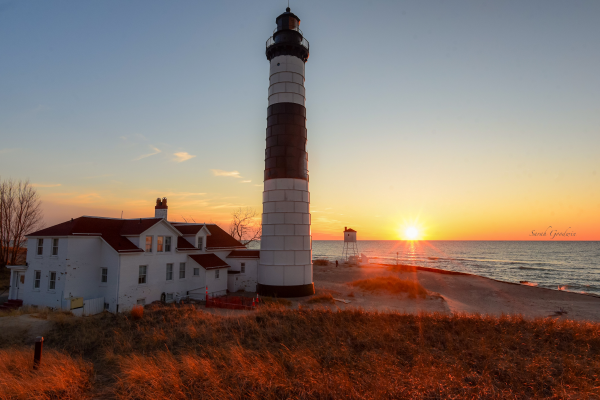 Want to see more pictures like this, taken by Michigan state parks photo ambassador Sarah Goodwin at Ludington State Park in Mason County? Visit Instagram.com/MiStateParks to explore photos and learn more about the photo ambassadors! For more on the photo ambassador program, call Stephanie Yancer at 989-274-6182.
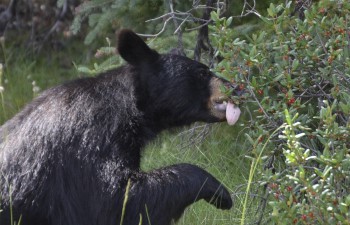
This time of year, bears can spend up to 20 hours a day foraging for foods rich in calories, like acorns, hickory nuts, berries and leafy greens, as they prepare to hibernate. Because bears can lose up to one-third of their body weight while overwintering, it is vital to pack on the pounds – with some bears consuming 20,000 calories a day.
However, while searching for natural foods, bears may come across enticing foods near homes and residential areas that keep them coming back for more.
“Bears have an excellent sense of smell and will follow their nose to find food. While natural foods may be abundant, bears could be drawn to bird seed in feeders, pet foods and garbage, because they’re appealing food sources and easy to access,” said Rachel Leightner, wildlife outreach coordinator for the DNR Wildlife Division.
While there is some nutritional value in bird seed and pet foods, allowing bears to eat these foods teaches them bad behavior. Bears will return to locations where they found a meal, and if they continue to be rewarded with food near homes, the situation could lead to human-bear encounters, property damage or ultimately, removal of the bear.
“Even if you enjoy wildlife watching and seeing black bears, it’s critical for the health and safety of the bear to not let it eat from human-provided food sources. Bears that seek out these types of foods are more at risk to lose their fear of humans, which may lead to an unfortunate outcome for the bear,” said Leightner.
Until bears enter their dens in December, it’s best to remove bird feeders and other potential food sources that may attract bears or other wildlife. Get additional tips and information about preventing potential conflicts with bears at Michigan.gov/Wildlife.
Questions? Contact Rachel Leightner at 517-243-5813.
|
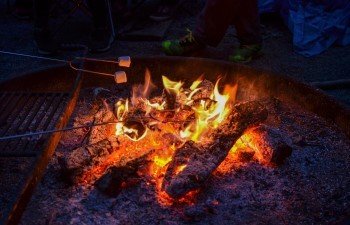
Pull your boots and flannels out of the closet – it’s campfire season! Just be sure to brush up on our burning tips before lighting that brush pile in the backyard. DNR firefighters have responded to more than 215 wildfires so far this year.
Burn safely
Whenever you burn, have a shovel and water source nearby, and never leave a fire unattended. Avoid burning on a windy day when hot embers can be whisked up by the wind into dry grasses or leaves.
Burning yard waste? Remember to check for a burn permit to see if conditions are safe for burning and know your local fire ordinances. Most wildfires are started by people burning yard clippings and leaves. You’ll need a burn permit any time the ground is not covered in snow.
Upper Peninsula and northern Lower Peninsula residents can view conditions at Michigan.gov/BurnPermit or call 866-922-BURN for information. Southern Michigan residents should check with their local municipality or fire department.
Burn efficiently
Well-dried wood is the most efficient fuel for your wood stove or campfire, burning more cleanly and releasing less irritating smoke than poorly seasoned wood.
The U.S. EPA’s Burn Wise efficiency program recommends drying cut wood in an airy, covered location for at least six months. Check your fuel using a moisture meter tool, waiting to burn until moisture content clocks in at 20% or less. Dry logs should feel light when lifted and produce a hollow sound when thumped together.
Burning trash, plastic and hazardous materials is never allowed, and can cause health issues. Safely recycle or responsibly dispose of these materials.
Burning isn’t always best
Many folks burn leaves and brush in the fall, but did you know you can repurpose fallen leaves? No fire required!
Dead leaves are a great free mulch that will insulate perennial plants and keep garden soil from washing away in the rain. They can also be raked up into a bin or pile to turn into nutrient-rich compost. Learn how with composting tips from the Department of Environment, Great Lakes, and Energy.
In addition to helping your garden, fallen leaves serve as winter habitat for wildlife. Turtles, toads, salamanders, moths and butterflies all spend the winter snuggled under leaves. An easy way to keep your area neat and provide habitat is to rake leaves under bushes and shrubs in your yard or provide a “wild area” where leaves can break down naturally.
With these tips in mind, you’ll be set to enjoy a fall season filled with campfires, hot cider and stargazing. Find more information on safe burning at Michigan.gov/PreventWildfires.
|
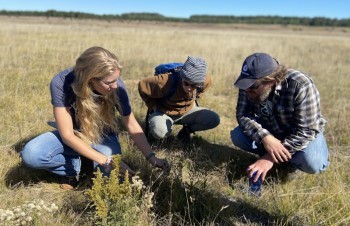
Explore the woods and waters of Michigan and gain valuable career experience in natural resources with a Huron Pines AmeriCorps service term. Terms run January-November 2023.
AmeriCorps members support natural resource management in their host communities and receive a stipend, educational funding and health care coverage.
Huron Pines AmeriCorps currently has 25 service positions at host sites across Michigan, including seven with the DNR. Host sites include DNR offices and local organizations such as the Grand Traverse Regional Land Conservancy and the Michigan Natural Features Inventory.
These positions introduce service members to career paths including community conservation, volunteer coordination, nature education programming, invasive species prevention, conservation science and more. Application requirements and eligibility information are available on the Huron Pines AmeriCorps hiring page. Apply by Oct. 28.
Questions about DNR host sites? Contact Andrea Stay at 517-542-5465.
|
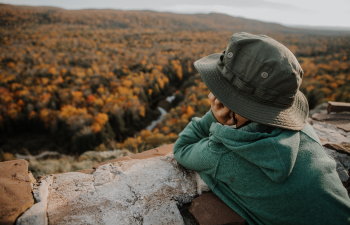
With some 20 million acres of forest land, Michigan is richer than many states in terms of opportunities to see seriously spectacular fall foliage. If you’ve got questions – Where are the best places to see peak color? Where exactly do those beautiful hues come from? – a recent WGVU Morning Show interview with DNR forester Cheryl Nelson can provide some answers.
“I’m loving the color, for sure! We’ve had some beautiful days,” said Nelson, who works out of the DNR’s Baldwin Field Office. During her quick morning chat with host Shelley Irwin, Nelson dug into the science behind why many trees go from green to gold, red, orange and other autumnal colors. If you want an easy-to-understand primer on photosynthesis, chlorophyll and the way trees process energy, take 10 minutes for a listen.
Nelson also talked a bit about the diversity of tree species across the state, citing Gaylord – full of maple and birch – as one of her favorite fall color spots, but also appreciating pops of color (like dogwoods) in more urban areas, like Ferndale, where she grew up.
If you’re looking for great color close to home or ready for a road trip, check out Michigan.gov/DNR/FallColorTour for statewide and regional fall foliage maps, paired with information on nearby historic sites, hunting, fishing, boating and wildlife viewing opportunities.
|
|